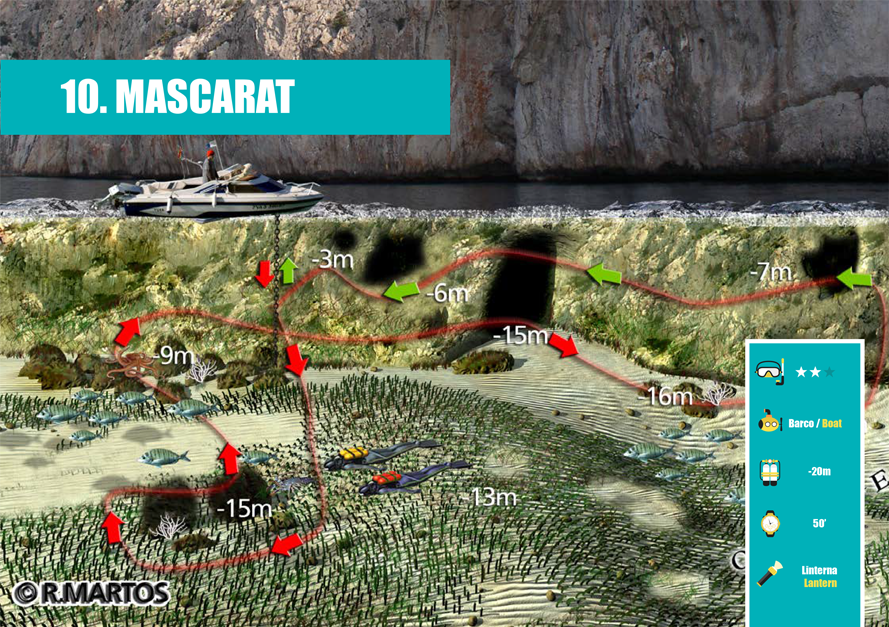
Leaving Calp heading south and shortly after passing the Morro de Toix we find the impressive cliffs of Mascarat, where you can still see the small huts and rope ladders that were once used by local fishermen in the traditional art of fishing als penyasegats.
Anchoring under one of these huts, we will descend to a bottom of posidonia and sand with some scattered rock, at -13 meters to, advancing a little offshore, immediately find 2 large stones that stand out in the clear landscape, stones in which with lucky you can see some lobster. After going around them we will head towards the wall and the sand gives way to detached rocks that we can browse, leaving to our left the perpendicular wall in which some tears appear as scars or slides.
At the bottom we find gorgonians fixed to the substratum, and there are also plenty of bream, sea bream and, eventually, shoals of barracuda. When we reach a depth of about -15mts, the wall turns inwards, forming the mouth of a short tunnel with no exit, inside which there is usually some forkbeard.
We will continue to advance along the wall until the air signals the moment of return, when we will reverse direction and now leave the wall to our right while we progressively ascend to reduce the excess nitrogen, while enjoying the small species that populate and cover it, such as the yellow encrusting anemone, actinias, nudibranchs or the friendly gobies or blennies. When we reach the height of the anchorage and at an altitude of -5mts we find the entrance to a small chimney through which, if the conditions allow it, we can pass and observe the marvellous backlighting formed by some arches, the exit being at -3mts.


